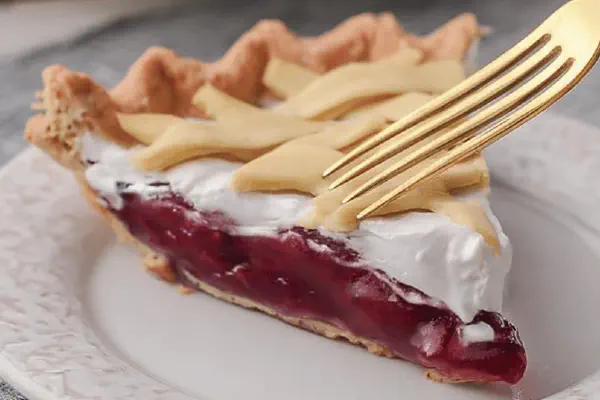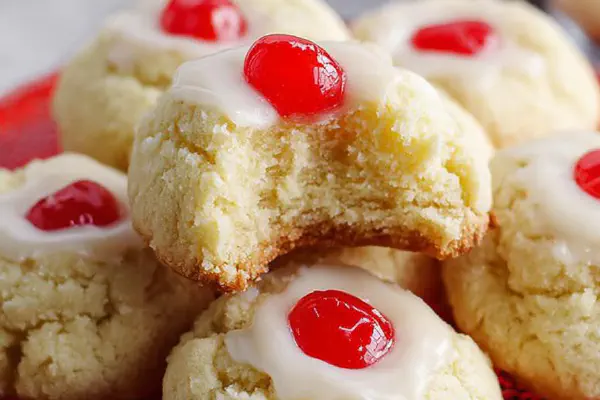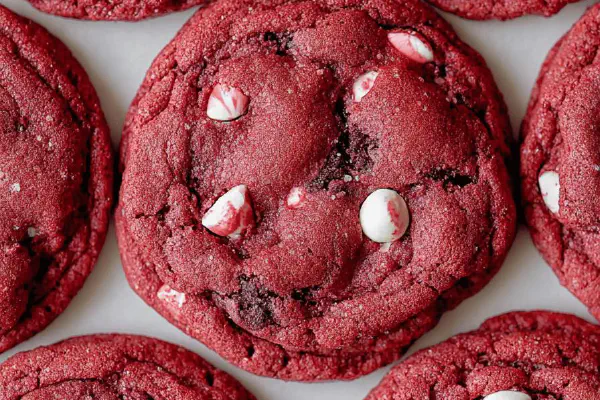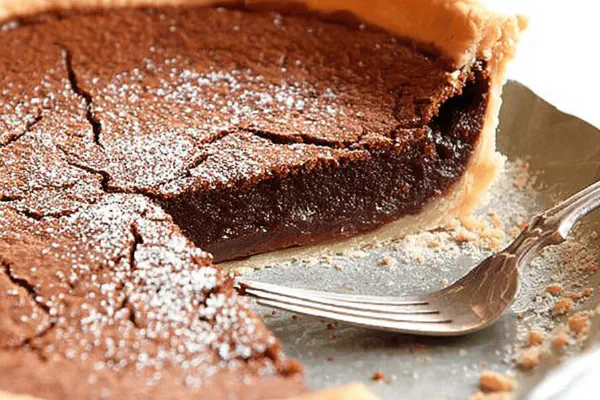Grape Juice Pie Twist

By Emma
Certified Culinary Professional
Ingredients
- 1 pre-made shortcrust pie crust chilled (9 inch deep dish)
- 1 1/4 cups grape juice unsweetened natural
- 3/4 cup granulated sugar
- 3 tbsp arrowroot powder (sub for cornstarch)
- 1 large egg
- 3 tbsp unsalted butter softened
- 1 tbsp fresh lemon juice
- 1/4 tsp kosher salt
- 1/4 tsp almond extract (replace butter flavor)
- 1 cup heavy whipping cream cold
- 1 tbsp powdered sugar
- 1/2 tsp ground cinnamon
About the ingredients
Method
- Set oven to 435°F — high heat aimed at fast crust setting. Roll out chilled shortcrust to fit 9-inch deep pie plate, prick base generously so steam escapes or odd bubbles punish you later.
- Pop crust in oven rack middle slot. Watch edges color — just when golden, pull out (about 9 minutes). If it browns too quick, shield edges with foil strips. Off the heat, let cool on wire rack. Turn oven off, preserve residual warmth for later.
- While crust chills, combine sugar and arrowroot in medium saucepan. Whisk dry lumps out thoroughly before adding grape juice slowly. Heat medium low, stirring constantly. The moment the mixture thickens enough to resist whisk strokes - a subtle tug, not full grab - remove from heat. No boisterous bubbling; gentle low simmer is key here to evade gluey lump traps.
- In separate bowl, beat whole egg briskly. Temper it with 2-3 tbsp hot grape mixture, whisk well to avoid cooked eggs scrambling. Pour back egg into sauce, whisking rapidly — watch texture shift thicker, nicely glossy, not curdled.
- Add softened butter, lemon juice, salt, almond extract. Keep whisking until butter melts fully and gloss returns. You can run a spatula through the mixture; it should part cleanly, hold lines without pooling back immediately.
- Spoon the filling into the baked shell; it should resist flowing, not wobble recklessly but settle like confident pudding. Let it rest one hour at room temp to grip its shape. Afterward, cover with plastic and chill in fridge minimum 3.5 hours — longer if your fridge is warm or filling seems loose.
- Meanwhile, whip cream with powdered sugar and cinnamon to soft peaks. The spice cut back grape sweetness and adds warmth.
- Right before serving, dollop spiced whipped cream over pie. Slice with a sharp serrated knife for clean edges. Expect some resistance from thick filling and crunch from firm crust — a balance less watery and with more structure than earlier attempts.
- If crust seems soggy next time, preblind bake longer or sprinkle crushed nuts on base before baking to absorb moisture. Arrowroot holds less water than cornstarch but also sets softer; use fresh juice or it thickens unevenly. If you lack arrowroot, tapioca starch is a decent backup but expect subtle changes in clarity and gloss.
- Almond extract is subtle but important — butter alone lacked character in past tries. Swapping a bit adds a nutty depth without distracting from grape essence. Cinnamon whip is personal favorite, but nutmeg or even a touch of cardamom perk up the cream differently.
- This pie doesn’t get much easier with shortcuts; each step builds texture and flavor. Rushing chilling or ignoring tempering eggs leads to grainy mess. Watch and smell the thickening sauce—it smells faintly fruity, with a mellow caramel fragrance from sugar and butter melding before coolness dulls it.
- When spooning filling into crust, avoid scraping last bits of sauce burnt to pan edges—bitter pockets lurk there. Use silicone spatula and smooth surface evenly. Fill should level itself but not run to edges.
- Serving straight from fridge firms it best. Watch for moisture condensation if left out too long, it softens crust unwantedly.
- Note on crust: homemade holds better texture than most store-bought, but requires proper rest before rolling to avoid shrinkage mid-bake.
- Texture wise, this pie shines when filling jiggles subtly on nudging plate but never breaks away or quivers like gelatin. You’ll understand by feel and sight. The slight tactile resistance signals ideal consistency.
- Gather some grapes on side as garnish or small fresh mint leaves if you want color accents instead of heavy decorating. Keep topping simple for taste clarity.
- Last thought: always label pie clearly in fridge with date if preparing ahead; grape juice pie tends to absorb fridge odors, seal tightly.
Cooking tips
Chef's notes
- 💡 Heat oven high, 435°F–fast crust set. Prick crust deeply to stop bubbling trapped steam. Foil shield if edges brown before crust fully done. Let crust cool on wire rack off heat—preserve residual warmth, keep crust dry not soggy.
- 💡 Arrowroot needs gentle heat—no full boil, else breakdown and thinning. Whisk constantly: watch glaze thicken, tug strong but not gummy. No raging bubbles; gentle low simmer only, prevents gluey lumps that wreck texture.
- 💡 Temper eggs carefully. Beat whole egg brisk, add hot grape mix in 2-3 spoons slow. Whisk fast avoiding clumps. Pour back into sauce rapidly, texture shifts—thicker, glossy, no curdle. Miss this and scrambled bits ruin mouthfeel.
- 💡 Butter added off heat melts smoothly; heat after breaks gloss, separates fats. Lemon juice salt almond extract incorporated now—almond brings nuttiness lost if skipped. Use vanilla? Fine but flavor shifts, lose subtle depth almond gives.
- 💡 Filling test: hold spatula mark firmly; not wobble or run. Rest one hour room temp, then chill 3.5+ hours for firm slice, flavor meld. Skip chill, filling weak, slice falls apart—texture compromised. Patience wins here always.
- 💡 Whip cream cold—peak softly, cinnamon cuts grape sweetness sharp edges, warming feel. Nutmeg or cardamom swap possible. Add powdered sugar gently, avoid over sweet if juice is sweetened accidentally.
- 💡 If crust soggy next try longer preblind bake, or layer crushed nuts base dries moisture. Frozen pie crust often fails here. Homemade shortcrust beats store for firm results. Rest dough cold before rolling—shrinkage kills shape otherwise.
- 💡 Filling spatula use: avoid scraping pan edges burnt parts. Bitter spots hide there. Use silicone spatula, smooth surface evenly; filling self-levels but won’t spread thin. Avoid chilling too long uncovered—surface condensation softens crust unwanted.
- 💡 Grape juice freshness matters. Concentrates, sweetened juices mess thickening times and gloss. Arrowroot breaks down differently than cornstarch—tender texture, less gummy but fragile, handle gently. Tapioca starch works in pinch but alter clarity textures.
- 💡 Last check: watch smell caramel butter sugar mix simmering—signals thickening near. Feel pull whisk, no clumps. Stop heat fast, chill slow. Rushing or ignoring temper eggs guarantees grainy mess. Mixing sensory clues beats stopwatch any day.
Common questions
Why use arrowroot instead of cornstarch?
Arrowroot needs gentle heat only, breaks down if boiled full. Produces softer, less gummy texture. Contrast cornstarch hustle with lumps. Keeps clarity better, though subtle glaze changes occur. Tapioca starch backup but shifts gloss and mouthfeel.
How to temper egg properly?
Beat egg briskly first. Slowly whisk 2-3 tbsp of hot grape mix into egg to raise temp gently. Avoid cooking egg chunks. Rapidly pour back in sauce while whisking fast to combine. Skipping leads to curdled bits, grainy texture mess. Timing cues better than strict timing.
Crust soggy after baking?
Preblind bake longer if soggy. Prick crust base to vent steam. Try crushed nuts base layer absorbs moisture poor moisture barrier. Frozen pie dough often underperforms here. Rest dough cold before rolling to prevent shrink. Oven temp high at start helps crisp edges fast.
Storage tips after baking?
Chill pie minimum 3.5 hours covered tightly. Keeps filling firm, prevents fridge odors absorption. Label with date if prepping ahead. Serve straight from fridge for best mouthfeel. Leaving out room temp long causes moisture condensation softening crust unwantedly.



